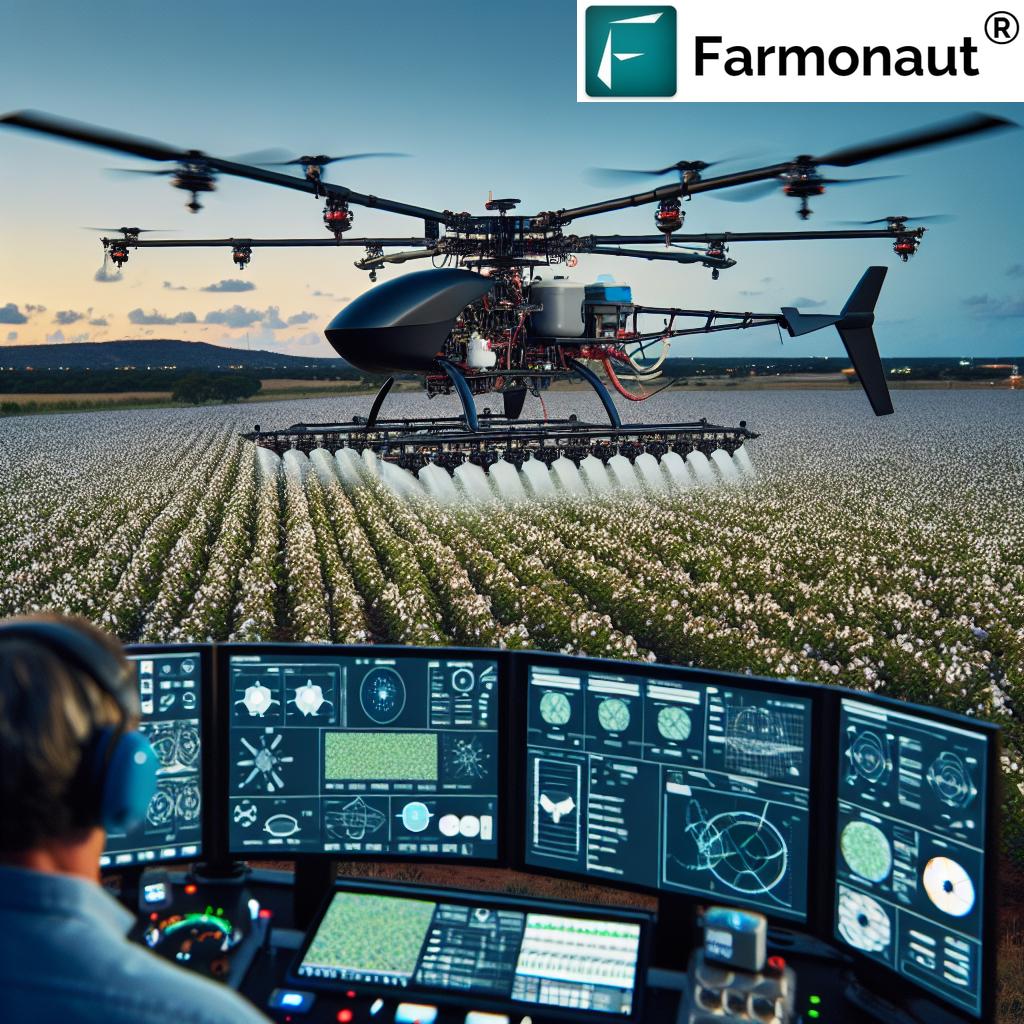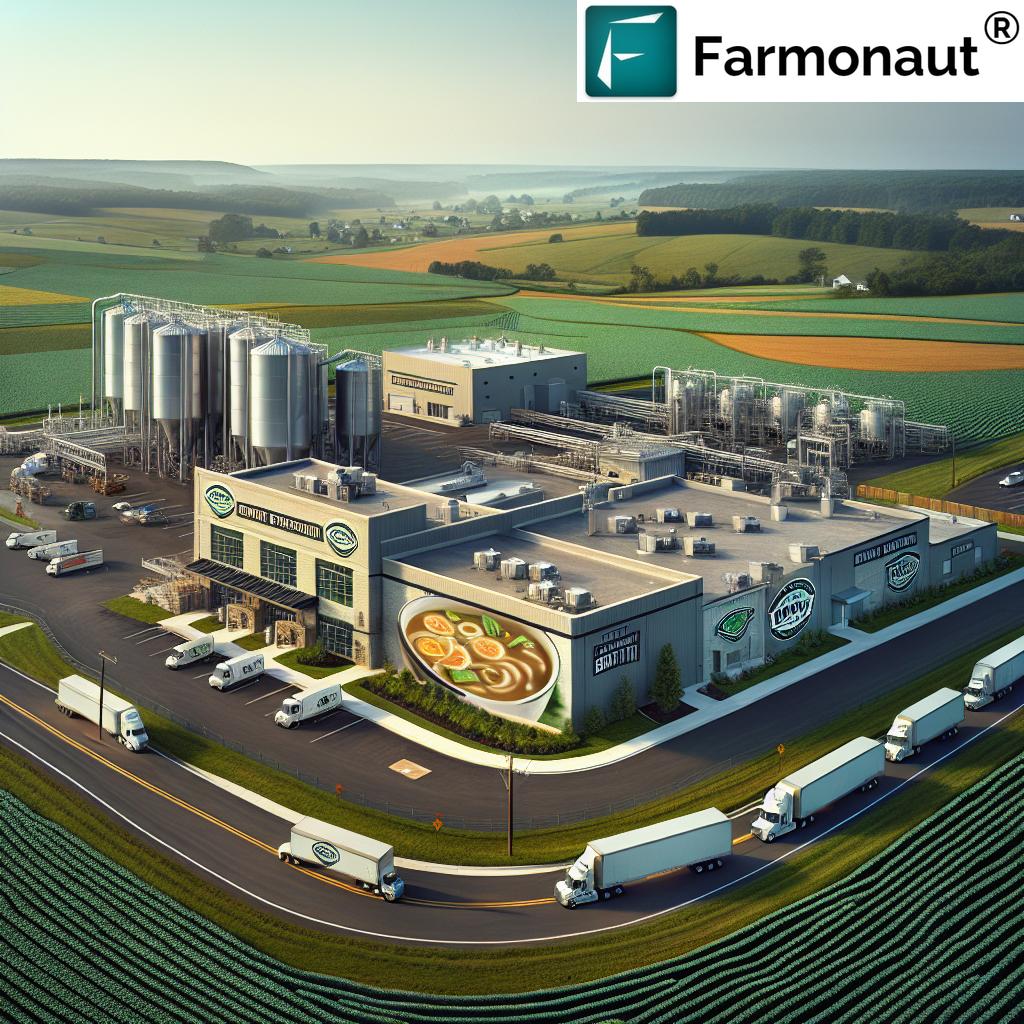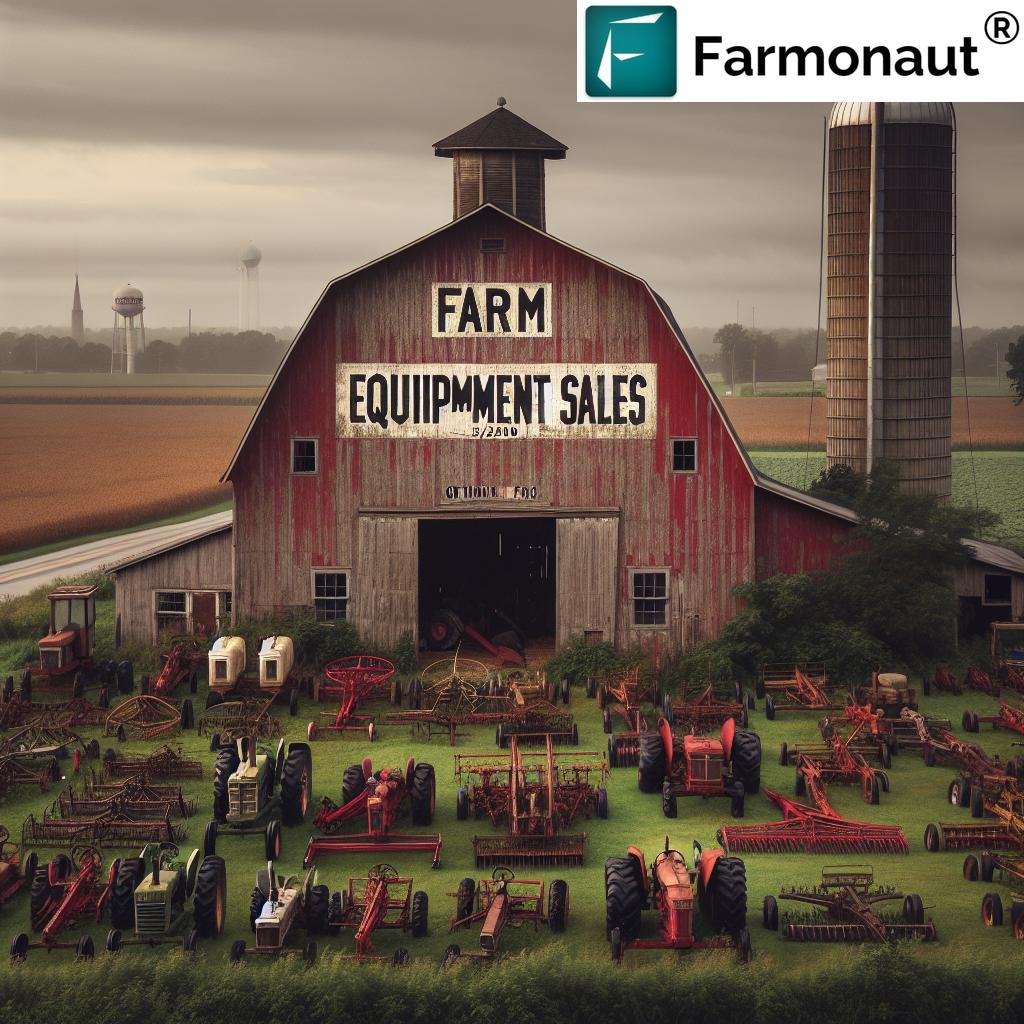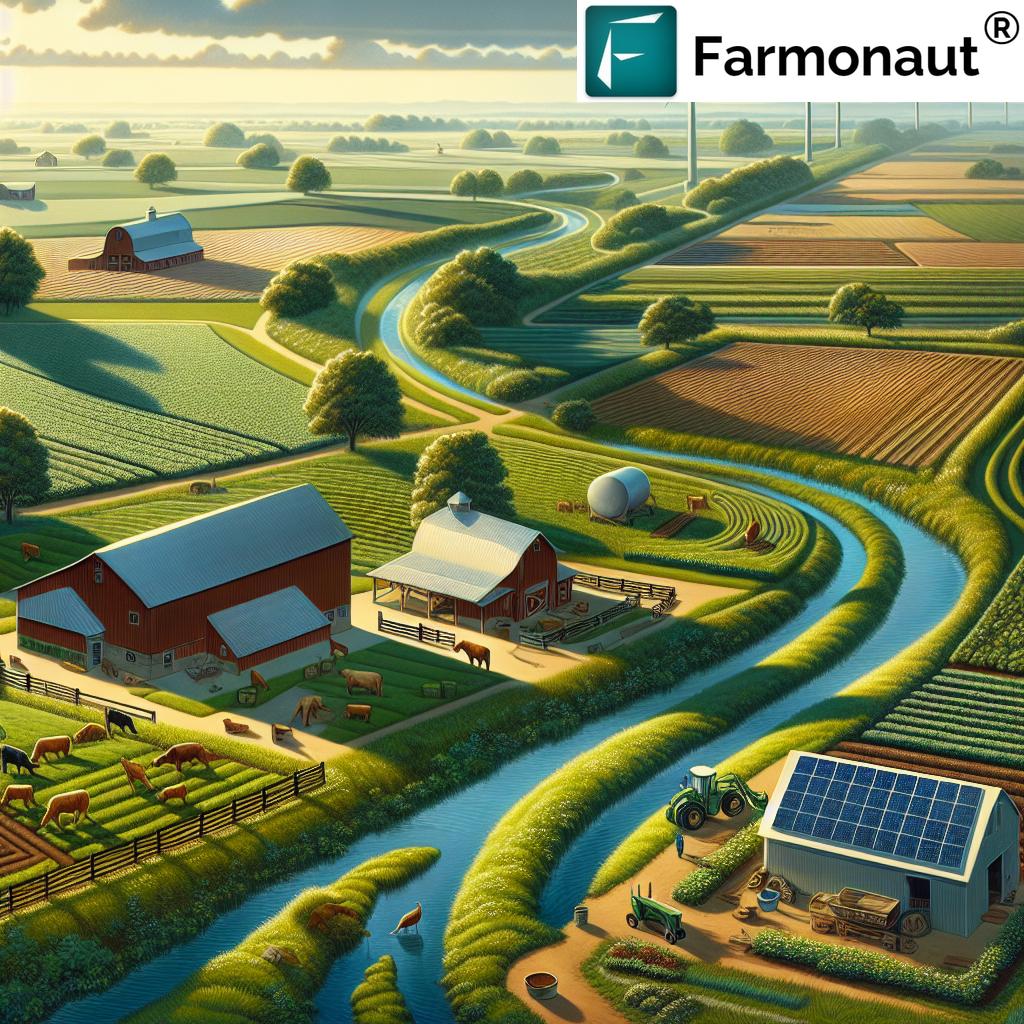Cannabis Market Analysis: 7 Key U.S. Cultivation Trends Shaping the Industry’s Future
“By 2028, U.S. vertical cannabis farms are projected to grow by over 30% annually, revolutionizing urban cultivation.”
“Sustainable cultivation methods now account for 45% of new cannabis facility investments in the United States.”
Table of Contents
- Introduction: Cannabis Market Growth and Transformation
- Legal Landscape & Cannabis Market Growth in the U.S.
- 7 Key U.S. Cannabis Cultivation Trends
- Trend Comparison Table
- Technological Advancements in Cannabis Agriculture
- Environmental Impact of Cannabis Farming
- Market Challenges and Opportunities
- Consumer Trends & Sustainable Cannabis Products
- Farmonaut’s Role in Cannabis Agriculture Transformation
- Future of Cannabis Agriculture – What Lies Ahead?
- FAQ: Cannabis Market Analysis
Introduction: Cannabis Market Growth and Transformation
The cannabis industry has seen unprecedented growth and transformation in recent years. Once relegated to the fringes of agriculture and strictly regulated by legal frameworks, cannabis cultivation has become a mainstream, dynamic sector driven by agricultural innovation, changing legal landscapes, and evolving consumer preferences. Cannabis market growth is not just a matter of increasing acreage or facility count – it also involves substantial advancements in cultivation methods, technological integration, and sustainable practices.
This detailed analysis delves into the US cannabis cultivation landscape, exploring key trends such as vertical farming cannabis, automation, sustainability, organic methods, data-driven solutions, LED lighting, and genetic innovation. The research also covers industry challenges, environmental impacts, and the future outlook, with a focus on agricultural technology and innovation as central drivers.
Legal Landscape & Cannabis Market Growth in the U.S.
The legalization of cannabis – both medical and recreational use – across several states in the United States has been the primary catalyst for the sector’s market growth. In North America, Canada leads with its 2018 legalization of recreational cannabis, establishing a regulatory framework that inspired similar progress in the U.S. Cannabis market revenues reflect this trend; for instance, the U.S. cannabis vertical farming market generated USD 94.8 million in 2023 and is projected to reach USD 292.7 million by 2030, with a CAGR (Compound Annual Growth Rate) of 17.5% from 2024–2030 (Grand View Research).
Individual U.S. states, from California to New York, continue to evolve their legal frameworks, generating a patchwork of regulations and market environments. The variability in regional laws affects everything from farm licensing and environmental standards to the adoption of technological advancements in cannabis agriculture.
7 Key U.S. Cannabis Cultivation Trends
The cannabis cultivation sector in the United States stands at the forefront of agricultural innovation. Below, we analyze the seven pivotal trends shaping the current and future states of cannabis agriculture and the cannabis market.
1. Vertical Farming Cannabis: Maximizing Efficiency in Urban Spaces
The adoption of vertical farming methods has fundamentally altered the landscape of cannabis cultivation. By using stacked layers to grow plants within controlled indoor environments, growers can achieve dramatically higher density and productivity per square foot compared to traditional methods. The global vertical farming cannabis market is forecast to reach USD 1,377.0 million by 2030 (CAGR: 18.5% from 2024–2030).
- Efficient Use of Space: Enables urban cultivation – crucial as city-based demand soars.
- Controlled Environment: Consistent yields due to precise management of temperature, humidity, and lighting systems.
- Reduced Water and Chemical Inputs: Vertical systems use up to 90% less water (source).
Example states leading in vertical farming cannabis: California, Colorado, Massachusetts, Illinois, New York.
2. Automation & Artificial Intelligence for Cannabis Cultivation
The integration of automation, AI, and data-driven analytics in cannabis farming is accelerating operational efficiency. Automated planting, harvesting, and climate control systems lower labor costs and variability. AI algorithms continuously analyze sensor and satellite data to optimize irrigation, nutrient scheduling, and detect environmental stress. These technological advancements in cannabis agriculture are delivering superior crop yields and product consistency.
- AI & Data Analytics: AI provides real-time monitoring of conditions, from soil moisture to pest detection.
- Automated Processes: Reduce human error, making scaling and compliance easier for multi-state operators.
- Sustainability: Smarter use of inputs, minimizing waste and reducing environmental impact.
States at the forefront: Oregon, Washington, Colorado, Nevada.
3. Sustainable Cannabis Farming Practices
Sustainability has moved from a buzzword to an industry imperative as the environmental impact of cannabis farming attracts scrutiny. Water management, renewable energy adoption (solar, wind), and closed-loop systems are becoming standard. Many facilities now track and reduce their carbon footprint — for which carbon footprinting solutions are invaluable.
- LED Lighting: Energy-efficient lights lower power use compared to high-pressure sodium systems.
- Water Recirculation: Closed systems drastically cut waste, especially in drought-prone states.
- Certification: Many brands pursue organic or sustainability certification in response to consumer demand.
Notable states with sustainable investment: California, Colorado, Oregon.
4. Organic Cultivation & Soil Health
Organic methods and regenerative soil practices are rapidly gaining traction in the cannabis sector, encouraged by consumer demand for toxin-free, eco-friendly products. Organic cultivation emphasizes living soils, composting, and avoidance of synthetic fertilizers or pesticides. Many farms are transitioning to these practices for both product differentiation and ecological stewardship.
- Soil Rejuvenation: Through crop rotation, cover crops, and compost teas.
- Pest Management: Use of integrated pest management (IPM) over chemical control.
- Certification: USDA Organic or other third-party eco-labels.
Leading markets: California, Oregon, Vermont, Maine.
5. Data-Driven Methods & Sensor Analytics
Advanced sensor technologies, precision agriculture, and satellite data are integrating into daily operations for both compliance and productivity. Our Farmonaut platform, for example, empowers farmers with satellite-based crop health and environmental monitoring, making informed decisions on irrigation and nutrient supply easier than ever. These data-driven methods are at the cutting edge of cannabis cultivation methods.
- Remote Sensing: Monitoring of crop health, soil moisture, and stress via satellite imagery.
- Automated Decision Support: AI-powered alerts for disease, pest, or irrigation requirements.
- Resource Optimization: Reduces water, fertilizer, and energy input while maximizing yields.
Implemented widely in: Colorado, Michigan, Nevada, Arizona.
6. LED Lighting & Energy Efficiency
Lighting is the biggest single energy expense for indoor cannabis farms. Advanced LED lighting solutions now offer tailored light spectrums at much lower energy input compared to HID or HPS lights. This shift supports both environmental goals and operational profitability, especially as utility costs and carbon costs become more significant.
- Custom Spectra: LEDs enable precise light recipes for each cannabis growth phase.
- Lower Heat Output: Reduces cooling costs and total facility energy usage.
- Longevity: LEDs have longer lifespans, reducing replacement frequency and waste.
High adoption: California, Maryland, Massachusetts, Illinois.
7. Genetic Innovation & Strain Resilience
Genetic advancements have become essential as the industry battles pests, diseases, and the challenges posed by climate and wildfire risks. Breeding programs focus on developing resilient, high-potency strains with shorter flowering cycles, higher yields, and targeted cannabinoid profiles. This trend is also accelerating medical cannabis applications and novel product development.
- Resilient Strains: Drought, pest, and disease resistance crucial for fluctuating environments.
- Consistency: Breeding for uniform cannabinoid/terpene content across cycles.
- Customization: Varieties tailored for wellness, medicinal, or recreational use.
Key states & regions: California, Colorado, Michigan, Arizona.
Trend Comparison Table: 7 Key U.S. Cannabis Cultivation Trends
| Trend Name | Description | Estimated 2024 U.S. Adoption Rate (%) | Expected Market Growth Impact | Leading Technologies/Methods | Example States |
|---|---|---|---|---|---|
| Vertical Farming | Stacked layers in climate-controlled indoor facilities for maximum space efficiency, yields, and energy management. | 32% | High – urban and high-density production, reduced resource use | Hydroponics, aeroponics, LED lighting, automation | CA, CO, MA, NY |
| Automation | Robotics and AI-driven systems streamline planting, irrigation, harvest, and quality control. | 27% | High – labor savings, improved consistency, compliance | Robotics, sensor arrays, AI-driven controls | WA, OR, CO, NV |
| Sustainable Practices | Use of renewable energy, water recycling, eco-friendly inputs, and carbon management. | 45% | Very High – regulatory, consumer, and investor-driven | Solar, closed-loop water, organic inputs, carbon tracking | CA, CO, OR |
| Organic Cultivation | Living soils, natural pest control, and avoidance of synthetic chemicals for premium market positioning. | 22% | Moderate – growing high-value consumer segment | Composting, IPM, organic certification | CA, OR, VT, ME |
| Data-Driven Methods | Satellite & IoT sensor data optimize input use, compliance, and predict crop yields for smarter farm management. | 31% | High – precision, risk reduction, resource savings | Farmonaut, remote sensing, environmental sensors | CO, MI, NV, AZ |
| LED Lighting | High-efficiency, tailored-spectrum LEDs for all indoor growth phases, lowering energy and cooling needs. | 39% | Very High – energy savings, increased control | LED arrays, advanced controls, automation | CA, MA, MD, IL |
| Genetic Innovation | Breeding for resilient, fast-growing, disease-tolerant, and targeted chemical profiles. | 26% | Moderate – future-proofing, health focus | Molecular breeding, tissue culture, trait selection | CA, CO, MI, AZ |
Technological Advancements in Cannabis Agriculture
Technological advancements in cannabis agriculture are the linchpin of rapid industry transformation. Innovations include:
- Satellite Crop Health Monitoring: Farmonaut’s multispectral large-scale farm management tools enable precise tracking of plant health, irrigation needs, and disease outbreaks using NDVI and other analytics.
- AI-Based Advisory Tools: Our JEEVN AI system analyzes vast data streams to provide custom recommendations, weather forecasts, and process optimization strategies for cannabis farms.
- Blockchain-Based Traceability: With Farmonaut’s product traceability platform, every step from seed to sale is recorded, building trust and compliance for both medical and recreational cannabis markets.
- IoT Sensors, Remote Sensing & Automation: Environment, humidity, and nutrient levels are tracked in real time, allowing for automated climate, irrigation, and lighting adjustments.
- API and Developer Integration: Developers in the cannabis industry can easily integrate Farmonaut’s API to improve their own platforms—see our developer documentation for details.
All of these innovations directly fuel efficiency, reduce labor costs, and support the ongoing sustainability transition for cannabis farmers, especially when navigating the highly monitored U.S. regulatory environment.
Fleet and Resource Management tools are now critical for cannabis agribusinesses overseeing distribution and logistics over multiple facilities.
Environmental Impact of Cannabis Farming
Cannabis cultivation, particularly indoors, can exert significant demands on energy, water, and nutrients. In 2017, U.S. cannabis farms consumed 0.11% of the nation’s electricity, with energy use driven mainly by HVAC and lighting systems. Unlike traditional crops, regulated cannabis cannot access federal disaster relief due to ongoing classification as a controlled substance – making fire and drought risk especially costly (source).
- Indoor vs. Outdoor Environmental Impact:
- Indoor: Higher electricity but lower land/water use;
- Outdoor: Greater water, nutrient runoff, sensitive to wildfires and climatic events.
- Sustainable Solutions:
- LED lighting for indoor farms
- Water recirculation & drought-resistant strain selection for dry regions
- Carbon tracking tools (see Farmonaut Carbon Footprinting module)
-
Many U.S. growers now choose forest-advisory systems for landscape impact and resilience, especially in California and Colorado.
“Sustainable cultivation methods now account for 45% of new cannabis facility investments in the United States.”
Market Challenges and Opportunities
- Pricing Pressures: In California, for example, overproduction, regulatory hurdles, and competition have caused price collapses that drive small farmers out of business. Coupled with wildfire risk, this is forcing a major industry shakeout. (Source)
- Legal & Regulatory Uncertainty: Federal status as a controlled substance hampers interstate commerce and disaster relief access for cannabis growers.
- Banking & Insurance Access: Many farmers struggle with limited banking and insurance solutions, creating financial vulnerability.
- Innovation Opportunity: These challenges catalyze investment in robust genetics, advanced climate control, fire and risk mitigation, and more resilient business models. For example, Brazil’s Embrapa is investing in long-term research for cannabis cultivation, potentially informing future Latin American and global best practices (source).
- Access to Crop Loans and Insurance: Farmonaut offers satellite-based verification systems that help cannabis and other specialty crop farmers access alternative insurance and credit, improving financial resilience.
The evolving policy landscape and continued expansion of medical cannabis programs (in states and globally) present significant market opportunities for both established producers and new entrants focused on sustainable, efficient, and transparent practices.
Consumer Trends & Sustainable Cannabis Products
Consumer preferences in the U.S. cannabis market now heavily favor brands that are eco-conscious, transparent, and locally-oriented.
- Organic, Sustainably Grown Product: Shoppers are increasingly checking for eco-certification, organic methods, and traceability in cannabis purchases.
- Transparency: Blockchain-based traceability (see Farmonaut) provides verifiable proof of product origin, farming methods, and safe handling, building trust for both medical and recreational use.
- Local/Regional Product: Preference for regionally grown, craft-batched cannabis with unique cannabinoid and terpene profiles is driving localized branding and micro-cultivation.
These consumer-driven trends mandate sustainability and digital transparency across the value chain, shaping future market leaders.
Farmonaut’s Role in Cannabis Agriculture Transformation
As a leading agricultural technology innovator, we at Farmonaut support cannabis farmers and agribusinesses in optimizing yields, ensuring compliance, and implementing advanced sustainability strategies.
- Satellite-Based Crop Health Monitoring: Provides insight into plant vigor, pest/disease risks, and water stress, allowing for near real-time environmental monitoring and digital recordkeeping.
- JEEVN AI Advisory System: Delivers actionable, AI-driven insights for day-to-day management, risk response, and process innovation – personalized to each grower’s conditions.
- Blockchain Traceability: Our secure platform ensures end-to-end verification and transparency for both consumers seeking sustainably produced cannabis and businesses facing rigorous compliance.
- Fleet/Resource Management: Large-scale cannabis operations can track farm equipment, optimize logistics, and reduce labor costs with our robust fleet management solutions.
- Carbon Footprinting: With our carbon footprinting module, cannabis producers can quantify, monitor, and report their environmental impact, supporting ongoing industry sustainability.
- Flexible, Scalable Solutions: Farmonaut’s modular platform and affordable subscription plans provide smallholder, midsize, and large growers access to advanced precision agriculture tools.
For those seeking to integrate these precision agricultural solutions directly into investment or compliance software, our API and developer tools offer seamless access.
Farmonaut Subscriptions – Simple, Transparent, Scalable
Future of Cannabis Agriculture – What Lies Ahead?
The future of cannabis market growth appears bright, but also complex, with multiple forces at play:
- Continued Legalization: More U.S. states, and countries such as Brazil and others in Latin America, are embracing medical and recreational cannabis. As regulatory frameworks evolve, interstate and international trade could unlock new opportunities for innovative, sustainable producers.
- Sustainable, Controlled-Environment Farming: Vertical farming cannabis in urban regions will increase, maximizing resource efficiency and minimizing environmental impact.
- AI & Digital Adoption: Automation, remote-sensing, and AI analytics will become mainstream, optimizing production for compliance, quality, and market responsiveness.
- Genetic Innovation: Resilience to climate stress, disease, and consumer-directed cannabinoid profiles will dominate breeding programs and research initiatives.
- Research & Science: The global expansion of interdisciplinary research (as exemplified by Brazil’s Embrapa) will shape best practices, compliance, and technological innovation for years to come.
- Economic and Environmental Resilience: Investments in technologies that enable efficient resource use, risk management, and climate adaptation will define the most successful operators.
In summary, the U.S. (and global) cannabis market is undergoing an agricultural revolution – with technology, sustainability, and scientific research paving the way for future growth and environmental stewardship.
FAQ: Cannabis Market Analysis & Cultivation Trends
What is driving cannabis market growth in the United States?
The key drivers: Expanding legalization (especially recreational), evolving consumer preferences, and rapid adoption of advanced cultivation methods such as vertical farming and automation. Legalization reforms have also opened up significant new opportunities for both local farmers and large-scale agribusinesses.
Which U.S. states are leading in cannabis cultivation innovation?
California, Colorado, Oregon, Massachusetts, and Michigan are among the leaders, with advanced adoption of sustainability initiatives, automation, vertical farming cannabis, and tailored genetic research programs.
How does vertical farming cannabis support sustainability?
By growing cannabis in stacked layers within controlled environments, vertical farming maximizes space use, reduces land requirements, significantly lowers water consumption, and allows for closed-loop environmental controls (lighting, temperature, humidity). These features make vertical farming a core strategy for environmentally responsible, high-output cannabis production.
What technologies are most influential for future cannabis agriculture?
Technologies with the greatest impact include satellite health monitoring (e.g., NDVI for crop health), AI-driven farm advisory tools, blockchain-based traceability for supply chain transparency, advanced LED lighting, environmental sensors, and automation platforms.
How can cannabis farmers better manage environmental risk?
By adopting data-driven monitoring tools, investing in sustainable inputs, diversifying with resilient genetics, and leveraging remote sensing (such as Farmonaut’s real-time advisory), farmers can anticipate issues, reduce resource use, and respond proactively to environmental or regulatory challenges.
Are Farmonaut services available for cannabis farmers?
Absolutely. Our full suite of satellite health monitoring, AI advisory, blockchain-based traceability, carbon footprinting, and fleet/resource management tools are optimized for cannabis and other specialty crops – scalable from smallholdings to multi-acre operations.
What is the expected CAGR for U.S. vertical farming cannabis?
Projections estimate a CAGR of 17.5% from 2024 to 2030 in the U.S., reflecting a strong trend towards vertical, urban, and high-efficiency cannabis operations.
How do automation and AI directly impact cannabis yields and quality?
Automation reduces labor variability, ensures more consistent application of water and nutrients, and minimizes losses from pest or disease outbreaks. AI enables rapid responses to changing conditions, supporting consistently high yields and improved product quality year-round.
Conclusion
The cannabis industry is at an inflection point: as legalization spreads, market sophistication increases, and consumer expectations rise, success in cultivation will be dictated by the ability to innovate, adopt sustainable and resilient methods, and harness the power of data and technology. From vertical farming cannabis to AI monitoring, the sector is a showcase for the agricultural innovations of tomorrow.
At Farmonaut, we are dedicated to accelerating this evolution by making advanced, satellite-powered farm management tools accessible to all cannabis farmers and agribusinesses. Whether you seek higher yields, better sustainability, or bulletproof compliance, our technology solutions are ready to empower your growth journey.















